Giustaforza Torque Wrenches
I’m a sucker for nice tools. They make a tough job easier, or at least more enjoyable. In the case of torque wrenches, they can also make a job safer for you and the parts you’re working on.
If you haven’t heard of the Giustaforza torque wrench (say ‘Gee-You-Stah-Four-Zah’), you’re probably not alone – at least in the US. These wrenches are made by Italian company Effetto Mariposa, makers of Caffelatex tire sealant. They actually made torque wrenches before they got in to the tire sealant game, and have made quick progress in the tool world. They don’t offer as wide of a selection as Park or Pedro’s, but I found that the tools that they do make are worth your consideration. Let’s take a closer look.
Giustaforza II 2-16 Pro – $249.95
This is the smaller of the two torque wrenches from Effetto Mariposa:

As the name suggests, this torque wrench works for a range of 2-16 Newton meters. That’s appropriate for things like stem bolts, seatpost bolts, cleats, and hubs.
The kit includes steel bits in the following sizes: hex 2mm, 2.5mm, 3mm, 6mm, T10, T15, T20, T30, Phillips screwdriver, and a flat screwdriver. The wrench itself is has a ¼ inch drive head, and all of these bits must be used with the included conversion socket.
The kit also includes a few 100mm long bits – 4mm, 5mm, T25, and an extension to use any of the short bits.

To dial the torque setting in, all you need to do is spin the knob…

…and leave it on the desired torque setting that is visible through the window:

Like all torque wrenches, Effetto Mariposa recommends that you always dial the torque back to the lowest setting before putting it back into storage.
The kit includes a chart for converting between Newton meters, foot pounds, and inch pounds.
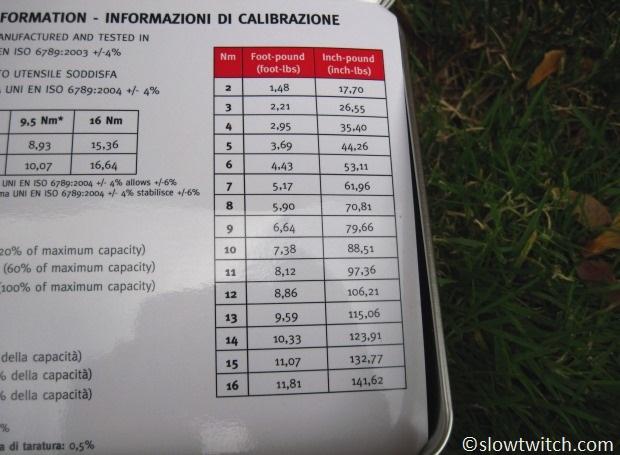
We’re told that the +/- 4% calibration is guaranteed for 5,000 uses (e.g. 5,000 ‘clicks’). Before using the wrench for the first time, you should also do a series of five clicks with no load – all you do is push the end of the wrench with your thumb. When you do need to recalibrate the wrench, we’re told that any calibration shop can do it, or you can send it back to their US distributor, Cantitoe Road.
Overall, the Giustaforza 2-16 works wonderfully. The ratcheting mechanism engages quickly and there is a solid click when you reach the desired torque setting. For those looking to save some bucks, there is a ‘non-pro’ version that costs $185 and foregoes the ratcheting function. While the wrench isn’t cheap, I give it five stars for quality, function, and feel.
Guistaforza II 10-60 Pro – $274.95
The Giustaforza II 10-60 has a range of (surprise!) 10 to 60 Newton meters. You might use this on things like bottom brackets, cranksets, and cassette lockrings.
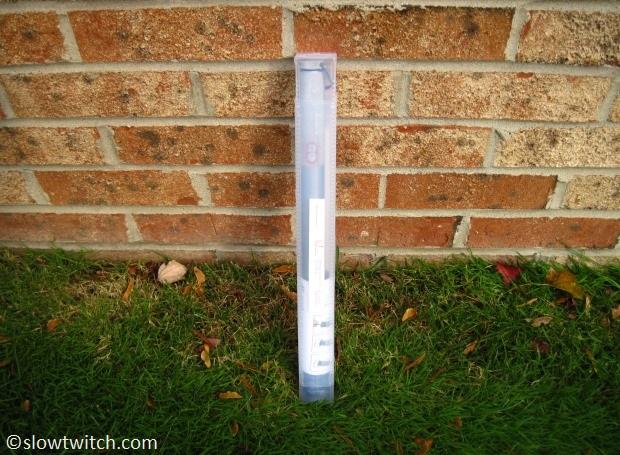
The 10-60 comes in a clear plastic sleeve, seen above. Out of the package, it looks like this:
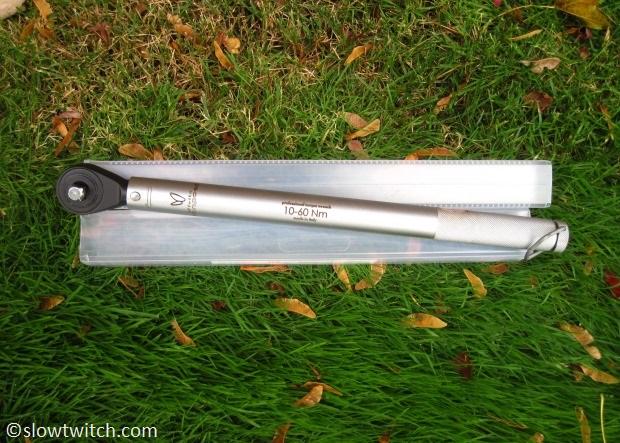
The head of the 10-60 only ratchets in one direction:

However, this wrench will actually work in both directions due to a clever design:
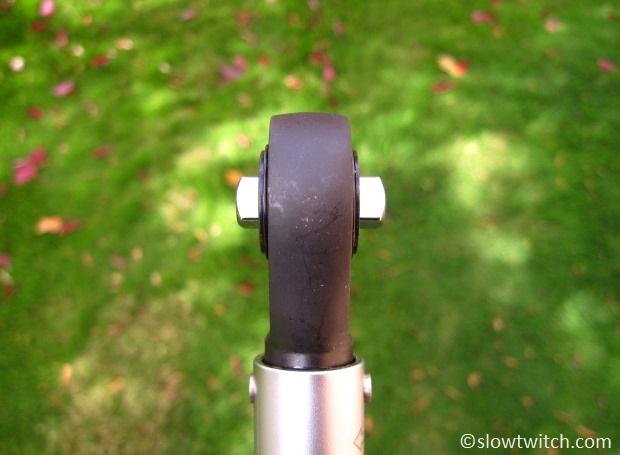
The 3/8-inch driver can push through either side of the socket, allowing the wrench to work in either a clockwise or counter-clockwise fashion (the above photo shows the driver pushed halfway through).
To set the torque, you must pull out on the dial at the bottom, spin it to the desired setting, and push the dial back in.

The torque setting is shown in a window:
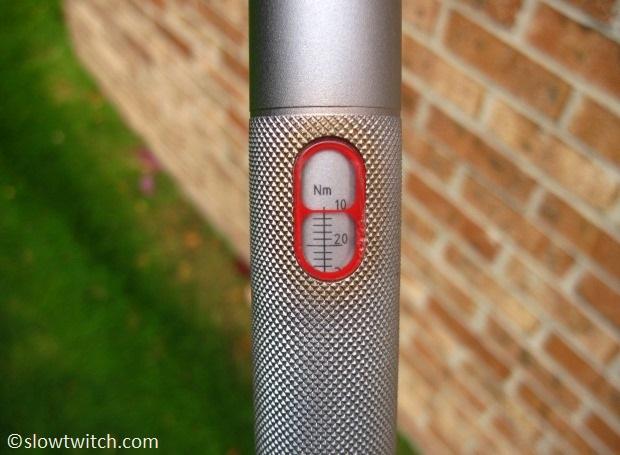
Similar to the 2-16, you get a small conversion chart for converting to other common units:

I found that the 10-60 largely looks and feels just like its smaller brother. It has the same 3-degree free movement when you reach the desired torque setting, and is guaranteed for the same +/- 4% accuracy and 5,000 clicks before recalibration.
The only downside of the 10-60, in my opinion, is that it does not include any bits. At this price, I think it deserves at least a 3/8" socket and a few common bits. I own a full kit of hex and torx sockets, which is a smart investment for anyone that plans to do a lot of wrenching. The most common ones you’ll likely need for this wrench are 5mm, 6mm, 8mm, and 10mm. For example, this SRAM GXP crankset requires an 8mm bit and a torque setting of 48-54 Nm:
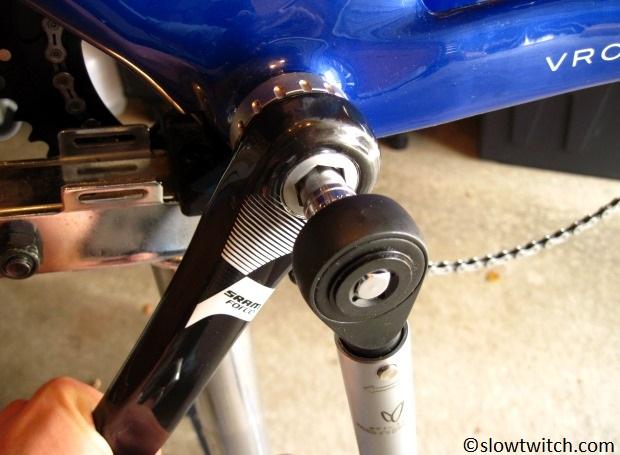
It is also not a bad idea to buy a 3/8” to ½” adapter for using larger size sockets (I use the wrench for working on automobiles, too).
Editor's Note: As of 11/15/2013, Effetto Mariposa will include a 3/8 to 1/2 inch adapter with all 10-60 torque wrenches at no extra charge. I guess our whining reviews ARE making a difference for the better…
Why Torque Wrenches?
You may be wondering why you might need such a wrench. Or – if you don’t own a torque wrench, which model should you start with?
Torque wrenches are all about accuracy. Simply put, you don’t want to over-tighten or under-tighten the fasteners on your bike. The most common problem is over-tightening metal clamps on carbon parts (e.g. aerobar extension clamps, saddle rail clamps). When something gets tightened down too much on a carbon part, it doesn’t bend – it cracks.
My opinion is that if you’re going to start with one torque wrench, a smaller size (e.g. the 2-16) is the better choice. Any time you’re adjusting your bike fit, traveling to a race, or otherwise assembling and disassembling the handlebars on your bike, you’re subjecting both the bars and fasteners to repeated stress. Items that require a high amount of torque (e.g. cassette lockrings) tend to be more robust and can deal with a little bit of variation.
What about beam-style torque wrenches? Personally, I’m not a huge fan of them. They’re inexpensive, but you have to be able to see what you’re doing (requiring a well-lit work space), and they’re more difficult for beginners. I have two of them, but honestly haven’t used them in at least a few years.
Some folks also like the small preset torque keys that only operate at a single value (e.g. 4Nm, 5Nm). I like them as supplemental or travel tools, but I don't think they take the place of an adjustable click-style torque wrench for the serious home mechanic.







